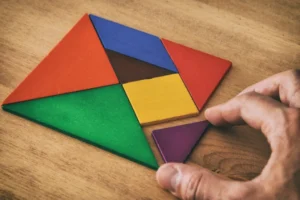Passover, or Pesach in Hebrew, is one of the most important holidays on the Jewish calendar. It is commemorated each year in spring, remembering the exodus of the Israelites from ancient Egypt over 3,000 years ago. In total, there are eight days of celebrations; in Israel, it is seven. The various traditions, rituals, and deep spiritual meaning associated with Passover are many. Whether you’re Jewish or simply interested in this holiday for its historical and cultural implications, this article will take you through the main happenings during the Passover celebrations.
The Historical Significance of Passover
The story of Passover is based in the Book of Exodus of the Hebrew Bible (Torah), narrating the journey of the Israelites from bondage to freedom. For hundreds of years, therefore, the Israelites were held slaves in Egypt by the rule of Pharaoh; Moses, being a prophet and agent of God, requested Pharaoh to release his people, but he denied. As a result of that God started the ten plagues on Egypt step by step worse than the previous one.
The third plague was the final and worst. Each home in Egypt would lose its firstborn child. Except that God told the Israelites to smear the blood of a lamb across the doorway, and thus the slaying angel would “pass over” them when he smote the first-born of Egypt. With this miracle, Pharaoh finally let the Israelites go, and their journey toward liberty began.
The term for this pivotal moment in the Exodus account is “Passover,” which refers both to God’s act as protector of Israel and to his delivering them out of bondage.
The Seder: A Night of Tradition and Reflection
The hallmark of Passover is the Seder: a ritual meal prepared on the first two nights of the holiday. “Seder” means “order,” in Hebrew, and during this ceremony, the particular order is followed strictly, adhering to Haggadah-a book that guides participants through the narration of the Exodus and various prayers, rituals, and symbolic foods.
This shows importance and symbolism with every detail of the Seder:
Matzah: Unleavened bread because, due to their hurry in leaving Egypt, they have no time for bread to rise. They baked flat, unleavened cakes. The whole week-long Passover is been completed by morking matzahs so that the memory of the journey of Israelites toward freedom wasn’t forgotten.
Maror: Bitter herbs such as horseradish remind them that the bitterness of slavery they faced in Egypt was still not erased yet.
Karpas: a green vegetable, usually parsley, dipped in saltwater. Symbolizes the tears of the Israelites when they were enslaved.
Charoset: a sweet mixture of fruit, nuts, and wine; symbolizing the mortar in which the enslaved Israelites built the edifices in Egypt. Its sweetness set against the bitterness of slavery is a reflection of hope and redemption.
Shank bone: The roasted lamb shank bone placed on the Seder plate symbolizes the Paschal lamb that was sacrificed and eaten in Temple times in Jerusalem.
Egg: A roasted egg is a symbol of new cycles of life, renewal, and rebirth.
The story of the Exodus is diffused throughout the entire Seder ceremony in an entertaining and very participatory way. The children are challenged to ask questions, in particular the youngest members of the family that traditionally ask the “Four Questions.” These questions generate a discussion on the uniqueness of the Seder night and the importance of customs. The Seder is not just a meal but a moment in which families pass down traditions, retell the story of liberation, and share in the themes of freedom and faith.
The Meaning Behind Passover
Passover is one of the most historically rooted holidays, but its themes echo modern values and human experiences. Freedom is at the center of Passover: it’s not limited to physical freedom from slavery but also spiritual and emotional freedom.
Freedom and Tyranny: The Exodus tale educates us about the horrors of tyranny and the might of freedom. Passover carries a great deal of importance to the Jewish nation as it relates to the hardships of their ancestors and ultimate victory over tyrants; however, this message of Passover extends far beyond this Jewish history-that is, it reminds one of fighting for liberty from tyranny and oppression in one’s most opportunistic sense.
Hope and Redemption: The passage from slavery to freedom also represents a journey of hope and redemption. Now, the festival is an opportunity for individuals and families to reflect on their personal journeys, challenges, and moments of hope. Similarly, in this realization that they were facing horrible circumstances, Passover urges one to think about believing in hopes even in the worse times of life and believing in the transformation.
The community factor is also very important in Passover. Traditionally, Seder is a family occasion which is conducted with friends, thereby upholding the spirit of community and shared heritage. In this holiday season, when people come together, bonds are strengthened, and traditions are passed on from one generation to another.
Contemporary Observance of Passover
While the core sacraments and principles of Passover have not changed much since its inception, the way the festival is actually practiced today is very different from one family to another. It is a serious, ritual-like Seder in some, while in others it becomes an informal and creative event with the establishment of new traditions or interpretation.
Some Jewish communities center Passover social justice, linking current problems of inequality, human rights, and freedom in individual lives to the Exodus narrative. Not infrequently, conversations at the Seder table include the contemporary struggle for justice and align the ancient narrative with real-life issues.
Besides that, many non-Jews and even families are invited to participate in a Passover Seder to experience its customs and messages. In recent times, Interfaith Seders have become common as they promote dialogue and understanding among groups of different religions and cultures.
Conclusion: A Time of Joyous and Reflective Celebration
Passover is that special time of reflection and deep spiritual meaning. It celebrates the freedom with which we are reminded of the collective resilience of the human spirit, reminding us of our connection to family, community, and tradition. From the richer symbolism inherent in the Seder meal through to the retelling of the Exodus story or reflections on contemporary struggles for freedom and justice, Passover itself teaches us profound lessons for our times.
As families and communities all gather to wish one another “Chag Sameach” or Happy Holiday, and celebrate the festival of Passover, they are reminded of that timeless message of liberation and hope which has inspired countless generations.







